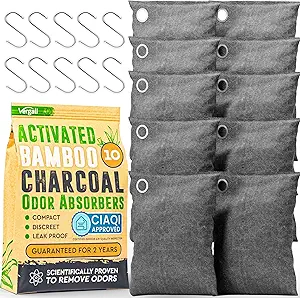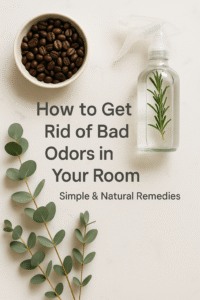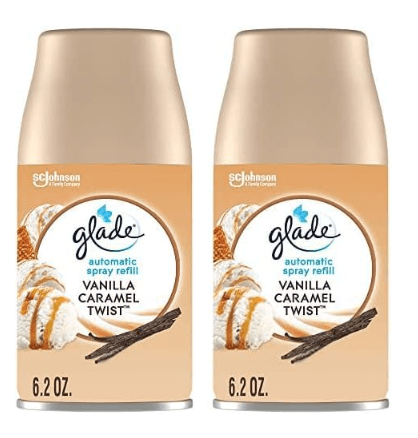How to Get Rid of Bad Odors in Your Room Using Natural Remedies
There’s nothing more frustrating than a persistent, unpleasant smell in your personal sanctuary. I remember one summer when a forgotten Tupperware of leftovers turned my home office into a place I couldn’t even work in. My first instinct was to grab a can of floral-scented spray, but all that did was create a bizarre, nauseating perfume of fake flowers and mystery funk. It was then I realized: You can’t cover up a bad smell. You have to eliminate it.
Through years of homekeeping and a commitment to creating a non-toxic living space for my family, I’ve learned that the most powerful odor-fighters aren’t found in the aerosol aisle. They’re likely already in your kitchen pantry. This guide is the culmination of my experience—a blueprint for tackling any bad smell at its source, using simple, safe, and surprisingly effective natural remedies.
The Science of Stink: Why Your Room Smells
Before we can defeat the enemy, we need to understand it. That “bad smell” is actually a cloud of microscopic molecules called Volatile Organic Compounds (VOCs) released by a source. The key is to understand that commercial air fresheners often just release their own, more powerful VOCs to overwhelm your senses. They don’t remove the offending molecules; they just mask them.
Natural remedies, on the other hand, work in one of two ways:
- Absorption: Porous substances physically trap the odor molecules, pulling them out of the air.
- Neutralization: An acidic or alkaline substance chemically reacts with the odor molecules, changing their structure so they no longer smell.
Our goal is to use these principles to attack the most common sources of room odors: bacteria from spills, mildew from dampness, lingering smoke particles, pet dander, and trapped cooking smells.
The Natural Odor-Fighting Arsenal: Your Toolkit
Forget harsh chemicals. Let’s build our toolkit from the power of nature and basic chemistry. These are my tried-and-true staples.
1. Baking Soda (Sodium Bicarbonate) – The Great Absorber
This is your number one tool. Baking soda is amphoteric, meaning it can react as both an acid and a base. This allows it to neutralize both acidic and alkaline odor molecules, while its crystalline structure absorbs and traps others. It’s cheap, non-toxic, and incredibly effective.
2. Distilled White Vinegar – The Master Neutralizer
Don’t be afraid of the initial smell! The acetic acid in vinegar is a powerhouse that chemically alters and neutralizes odor molecules. When the vinegar evaporates, it takes the bad smell with it, leaving behind nothing. I use a 50/50 solution with water for everything from cleaning surfaces to spraying fabrics.
3. Activated Charcoal – The Super Sponge
This isn’t the same as your BBQ briquettes. Activated charcoal is treated to have millions of tiny pores, creating a massive surface area that is exceptionally good at trapping odor molecules. It’s a passive but potent deodorizer, perfect for closets, refrigerators, or musty rooms.
4. Coffee Grounds & Essential Oils – The Finishing Touch
After you’ve absorbed and neutralized the bad odor, you can introduce a pleasant scent. Dry, used coffee grounds are excellent at absorbing odors while leaving a faint, pleasant aroma. Essential oils, when used properly, can provide fragrance without the synthetic chemicals. Tea tree, lemon, lavender, and eucalyptus are great choices for their clean scents and antimicrobial properties.
The Search and Destroy Mission: Finding the Source
You can’t win the war if you don’t know where the enemy is hiding. Putting a bowl of baking soda in a room with a hidden source of mold is like using a bucket to empty the ocean. You must be a detective. Methodically check these common culprits:
- Trash Cans: Not just the bag, but the can itself. Wash it out regularly.
- Textiles: Curtains, bedding, throw pillows, and carpets are huge odor traps. When was the last time they were washed?
- Hidden Spills: Check under furniture, beneath rugs, and in the corners of closets for old spills that have attracted bacteria.
- Damp Spots: Inspect under sinks, near windows, and in bathrooms for any signs of mold or mildew. This is a health issue, not just a smell issue.
- Vents and Filters: HVAC and air purifier filters can harbor dust and mold, spreading a musty smell throughout the house.
Action Plan: Step-by-Step Natural Deodorizing Recipes
Here are my go-to recipes and techniques for specific situations. They’ve saved me from countless odor emergencies!
Technique 1: The Overnight Odor Eliminator
Best for: General mustiness, stale air, or a room that just feels “off.”
- What you need: A shallow bowl and a cup of baking soda, activated charcoal, or dry used coffee grounds.
- Instructions: Simply place the bowl in the center of the room and leave it overnight. The material will passively absorb odors from the air. For a persistent smell, you may need to replace it every few days. I once did this in a guest room that had been closed up for months, and the difference in 24 hours was astounding.
Technique 2: DIY All-Purpose Deodorizing Spray
Best for: Refreshing fabrics, upholstery, and the air itself. A fantastic alternative to Febreze.
- What you need: A glass spray bottle, 1 cup distilled water, 1 cup white vinegar, and 10-15 drops of essential oil (lemon or lavender works well).
- Instructions: Combine all ingredients in the spray bottle and shake well. Lightly mist it over carpets, curtains, and furniture. The vinegar smell will disappear within an hour as it dries, taking the bad odors with it. Always patch-test on an inconspicuous area first!
Technique 3: The Stovetop Simmer Pot
Best for: Banishing cooking odors and creating a warm, welcoming scent throughout the home.
- What you need: A small saucepan, water, citrus peels (lemon, orange), a cinnamon stick, and a few whole cloves.
- Instructions: Fill the pot with water, add your ingredients, and bring to a low simmer on the stove. Do not let it boil dry. Within minutes, your home will be filled with a beautiful, natural fragrance that also helps neutralize lingering smells like fish or garlic.
Tackling Specific, Stubborn Odors
Some smells require a more targeted approach. Here’s how to handle the heavy hitters:
- Smoke Smell: This is the toughest. First, ventilate! Open all windows. Wash all fabrics (curtains, bedding). Wipe down walls and hard surfaces with a 50/50 water and vinegar solution. Then, place multiple bowls of activated charcoal or coffee grounds around the room to absorb the remaining particles.
- Pet Odors: For accidents on carpets, an enzyme cleaner is your best friend. It uses natural enzymes to break down the specific proteins in pet urine. For general pet smell on their beds or blankets, a generous sprinkle of baking soda is a lifesaver. Let it sit for at least an hour (or as long as possible), then vacuum it up thoroughly.
- Mildew & Musty Smells: This indicates a moisture problem. Find and fix the leak or source of humidity. Clean visible mold with a vinegar or tea tree oil solution. A dehumidifier can be a game-changer in basements or damp climates.
Once you have completely neutralized the source of the bad odor, you can focus on introducing a pleasant, lasting fragrance. While my simmer pot recipe is wonderful for an immediate effect, a high-quality air freshener can provide a consistent, welcoming scent. If you enjoy warm and comforting aromas, I’ve done extensive research and compiled a guide on the best vanilla air fresheners that prioritize natural ingredients.
Recommended Natural Products & Tools
While most remedies use household items, a few products can make your natural deodorizing efforts even more effective. These are items I personally use and recommend.

Activated Charcoal Bags
These are the easiest way to deploy the power of activated charcoal. Simply hang them in closets, place them in rooms, or put them in smelly gym bags. They are reusable for up to two years—just place them in the sun for an hour once a month to recharge.
Shop Charcoal Bags on Amazon
Pure Essential Oil Set
A good starter set with oils like lavender, lemon, peppermint, tea tree, and eucalyptus will give you a versatile toolkit for your DIY sprays and diffusers. Look for 100% pure, therapeutic-grade oils for the best results and scent.
Find Essential Oil Sets on Amazon
Amber Glass Spray Bottles
When making your own essential oil sprays, it’s crucial to use dark glass bottles. Sunlight can degrade the essential oils, reducing their potency. These are reusable, eco-friendly, and perfect for all your DIY cleaning and deodorizing recipes.
Browse Spray Bottles on AmazonYour Natural Odor Questions Answered
A Note on Pet Safety: Many essential oils (like tea tree, citrus, and peppermint) can be toxic to cats and dogs, especially when diffused or ingested. Always research specific oils and consult your veterinarian before using them around your pets. When in doubt, stick to baking soda and vinegar.
Will using vinegar make my house smell like a salad?
Only temporarily! This is the most common concern I hear. The acetic acid in vinegar neutralizes bad smells, and once it evaporates and does its job, the vinegar smell disappears completely, leaving a neutral scent. I promise, your room won’t smell like pickles. Just ensure good ventilation for an hour or so after cleaning.
How long does it take for baking soda to absorb odors?
For general mustiness, you should notice a difference within 24 hours. For stronger odors, it may take a couple of days, and you should stir the baking soda or replace it daily to expose fresh crystals. The more surface area you have (a shallow dish is better than a deep jar), the faster it will work.
What’s the fastest way to get rid of a bad smell before guests arrive?
If you have an hour, open the windows to ventilate, then put a simmer pot on the stove with lemon and cinnamon. The combination of ventilation (to remove the source) and the simmer pot (to introduce a pleasant scent) is the quickest fix. Then do a quick spritz of a natural room spray on any fabrics.
Breathe Easy: Your Home, Naturally Fresh
Creating a home that smells clean and fresh doesn’t require an arsenal of synthetic chemicals. By understanding the source of odors and using the powerful, simple ingredients from your own pantry, you can effectively eliminate bad smells for good. You’re not just cleaning; you’re creating a healthier, more natural environment for yourself and your loved ones.
So next time a mysterious funk appears, take a deep breath (or maybe hold it for a second), and reach for the baking soda and vinegar. You’ve got this. Welcome to the world of natural, effective home care.


